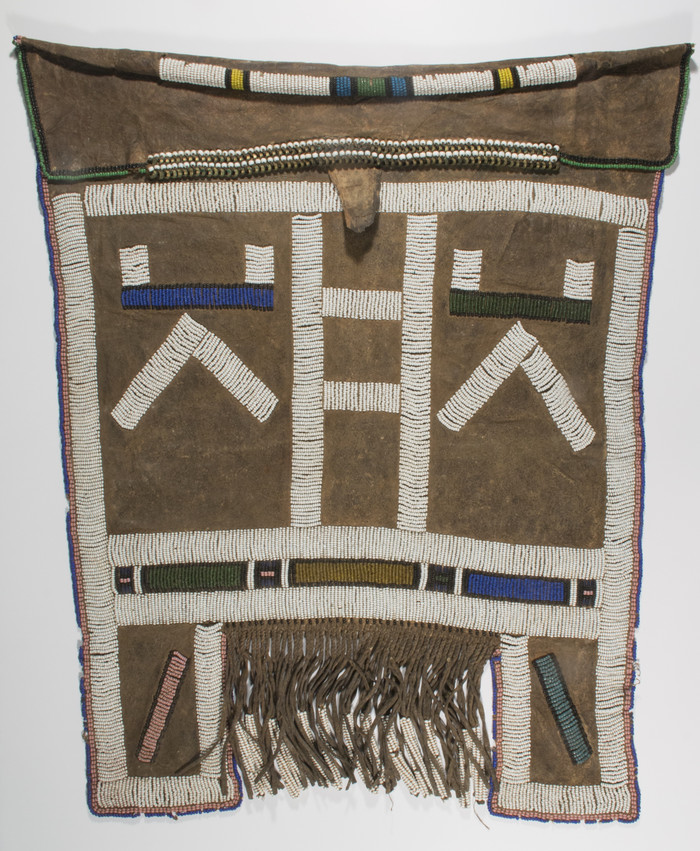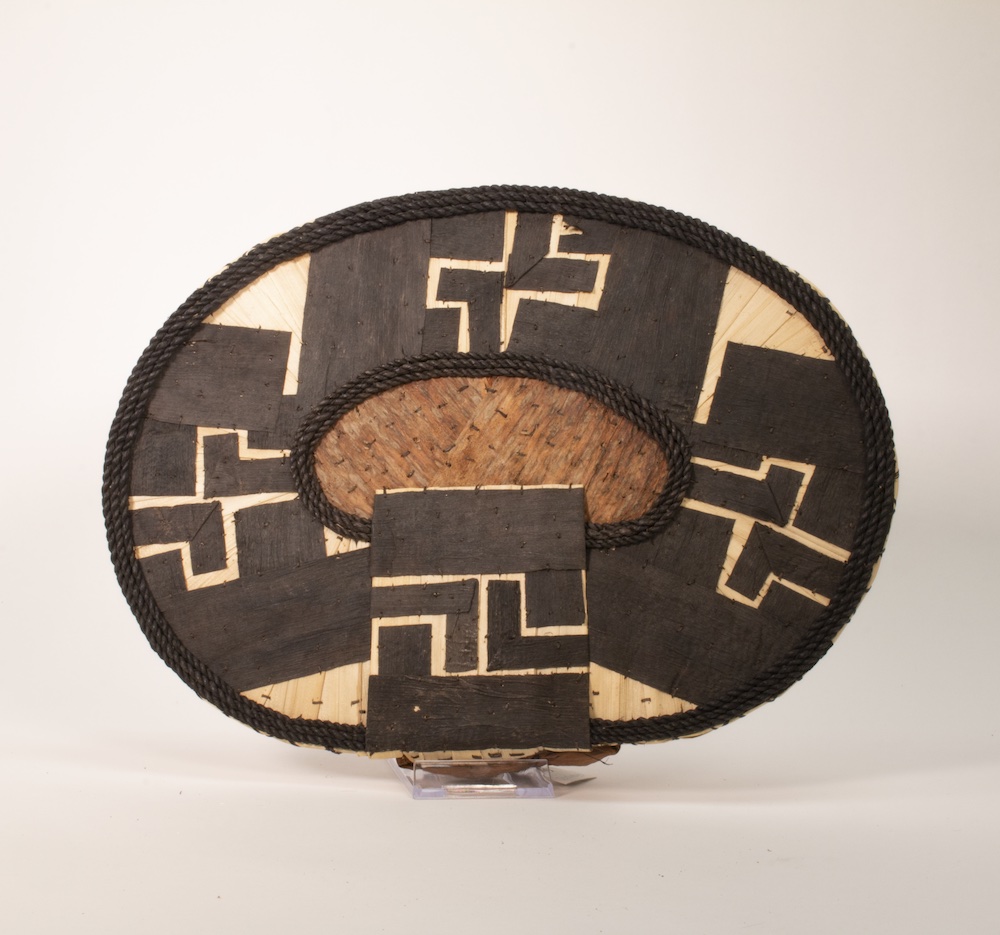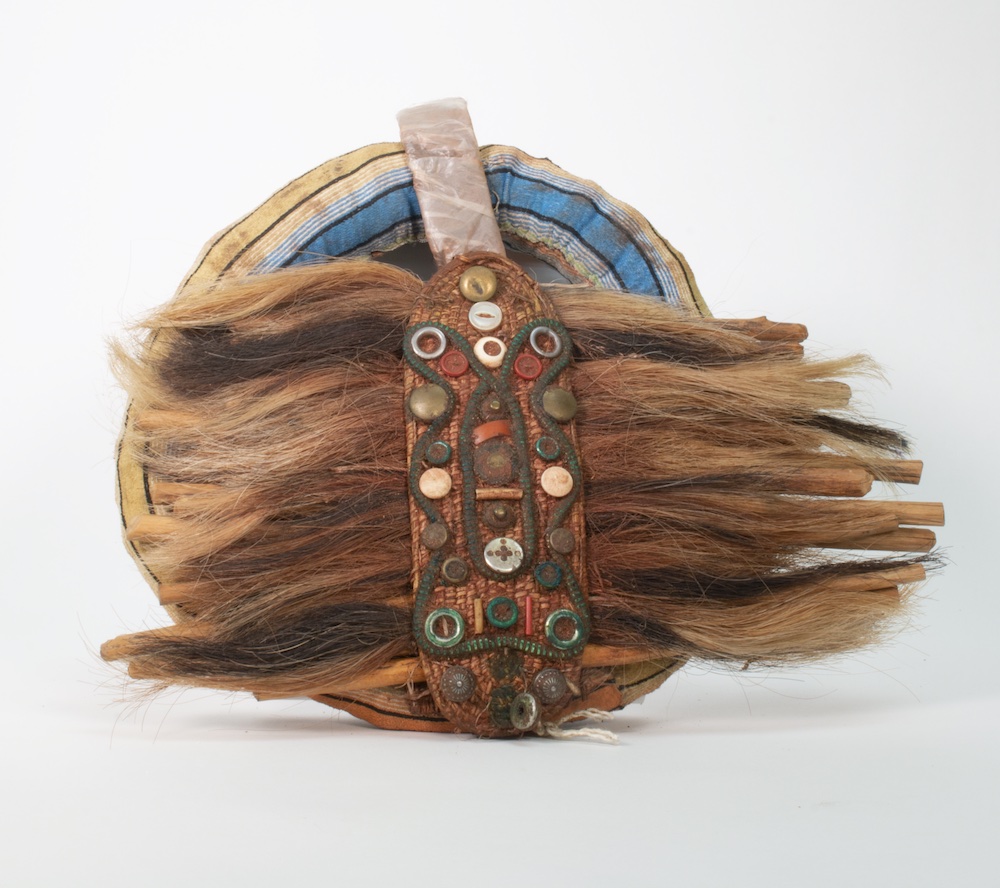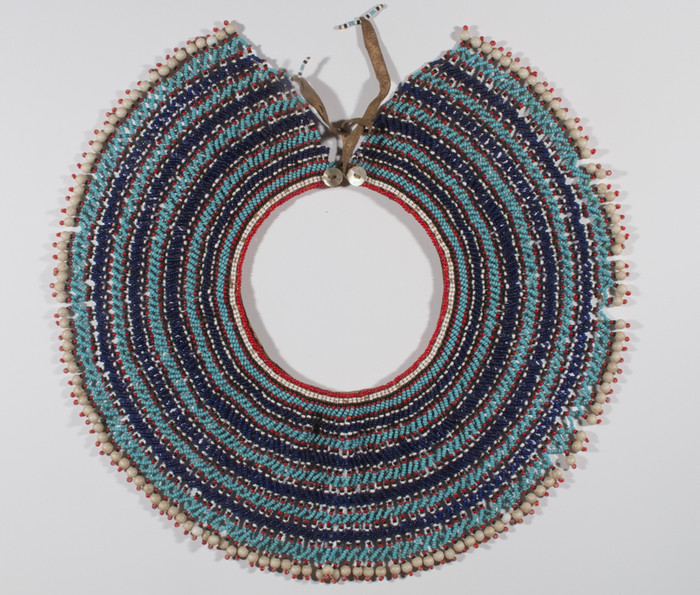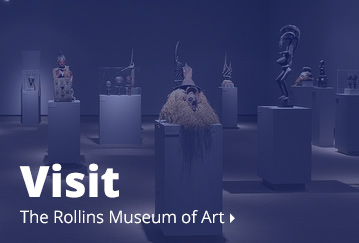African Art
Several recent gifts form the core of the African art collection at the Rollins Museum of Art. Our African artworks are comprised of a wide array of media and materials, some originally made for community and personal use while others were made for display in museums and galleries. Most works date from the 20th and 21st centuries and represent the colonial, modern, and contemporary periods. Historical sculpture, textiles, and items of adornment are collected alongside works of contemporary African art. The collection supports the teaching of the Department of Art and Art History, and it also actively contributes to the Program in African and African American Studies, among other disciplines.
PLEASE NOTE: Not all works in the Rollins Museum collection are on view at any given time. View our Exhibitions page to see what's on view now. If you have questions about a specific work, please call 407-646-2526 prior to visiting.
Unknown
(Kongo, Democratic Republic of the Congo)Chief’s cap (mpu), 20th century
Raffia, natural dyes
Gift of William D. and Norma Canelas Roth ’65. 2020.24
While this Kongo mpu may appear simple in color and design, it comprises an upper-class prestige cap, bestowed upon its owner upon ascension to office. Close-fitting caps, like this one, are worn by noblemen and -women, while taller mpu are exclusive to the king and chiefs. Even the Kongo word for chief, mfumu a mpu, or "chief of the cap," recognizes the power of the mpu. Beginning from the center point and spiraling outward, artists work with a single strand of fiber and build onto the central string to create the kotting and interlace patterns typical of mpu. Spirals, like the one on the crown of this mpu, are powerful and resilient symbols in the Kongo Kingdom, serving as metaphors for longevity and continuous existence.
Unknown
(Ewe, Ghana)Indigo strip-weave cloth, 20th century
Cotton, indigo dye
127 x 86 in.
Gift of William D. and Norma Canelas Roth ’65. 2020.23
This indigo strip-weave cloth from Ewe weavers in southern Ghana, suggests a West African-wide aesthetic, popular from Senegal to Nigeria. Historically, male weavers used horizontal looms to produce such strip-woven cloths for prestige clothing. Wearers generally wrapped the large, luxury cloths around their bodies in order to visually command attention through their great size and expensive apparel. Additional heddles allowed master weavers to create supplementary weft float designs in the woven cloth, resulting in more complex, intricate, and sought-after designs. Similarly, natural indigo dye has long been prized across West Africa and beyond for its rich, dark, bluish-black color. Expert indigo dyers, from Wolof women in Senegal to the Hausa men of northern Nigeria, cultivated the Indigofera plant into dyestuffs, which was clearly superior to natural European woad. Only when Europeans devised synthetic dyes in the late nineteenth century did natural indigo production begin to falter. The depth of blue, contrasting so starkly with unbleached cotton, effectively embodies this long-standing tradition of indigo strip-weave cloth.
Unknown
Ndebele, South AfricaA married woman's apron, ca. 1940
Goatskin, glass beads, and handmade metal rings
22 1/4 x 19 1/4 in.
Gift of William D. and Norma Canelas Roth '65, 2020.15
Unknown
Mangbetu, Democratic Republic of CongoRear apron, Early 20th century
Raffia and banana leaves
10 x 13 3/4 in.
Gift of William D. and Norma Canelas Roth '65, 2020.17
Unknown
Mukubal, AngolaHeaddress, ca. 1960
Animal hair, sticks, zipper, metal, plastic buttons and imported cotton cloth
10 1/2 x 13 1/4 in.
Gift of William D. and Norma Canelas Roth '65, 2020.18
Unknown
Thembu, related to Xhosa, South AfricaCollar/Necklace, ca. 1940-1950
Glass beads, leather and sinew
13 in.
Gift of William D. and Norma Canelas Roth '65, 2020.19
Unknown
Kuba, Democratic Republic of CongoDance skirt, ca. 1940-1950
Raffia palm fiber, ocher dye
33 x 274 in.
Gift of William D. and Norma Canelas Roth '65, 2020.20
Unknown
Himba, NamibiaNeck rest, ca. 1950
Wood and leather strap
6 1/4 x 5 1/4 x 4 in.
Gift of William D. and Norma Canelas Roth '65, 2020.21
Unknown
Mwela, AngolaDoll, ca. 1960
Wood core with an overlay of cotton, rattan, imported cotton cloth, glass beads, shells, threads, ocher, fat, clay
9 3/4 x 5 1/2 in.
Gift of William D. and Norma Canelas Roth '65, 2020.22
